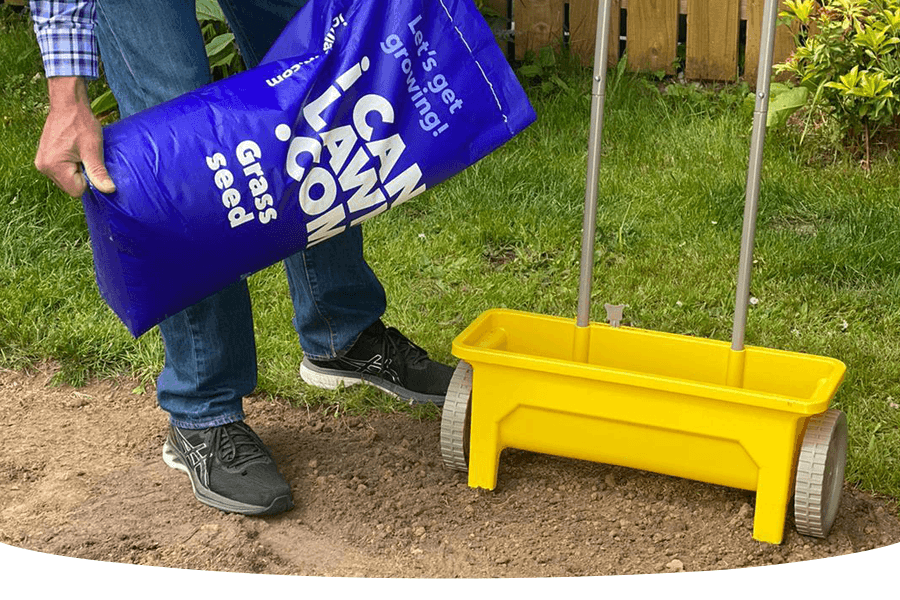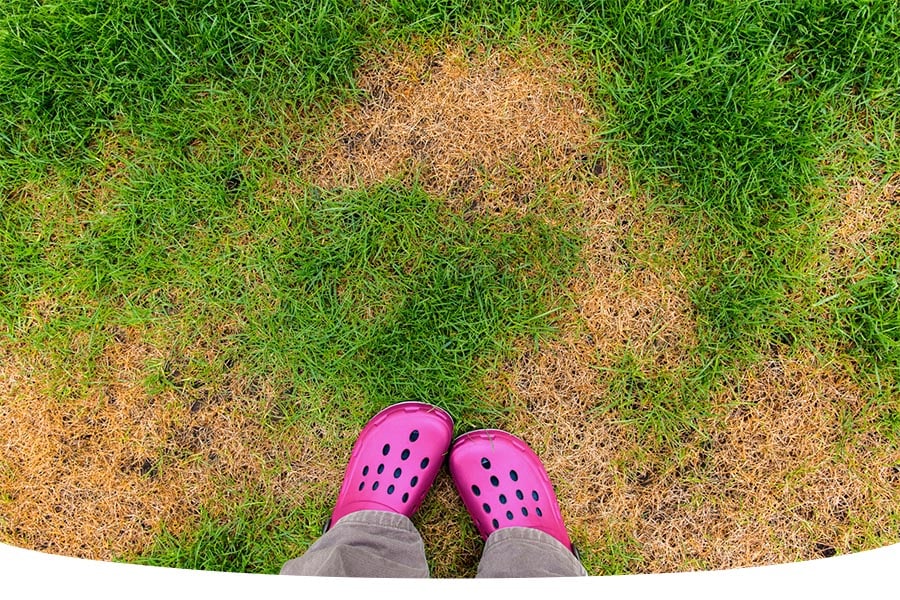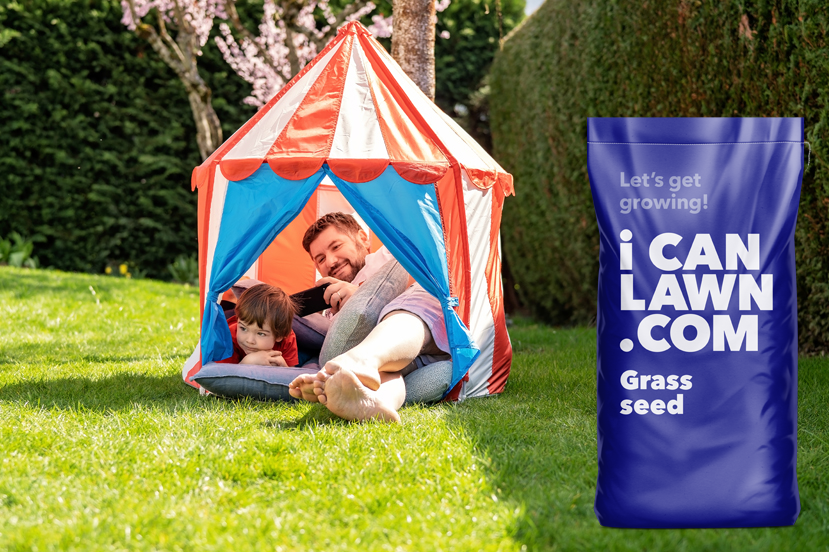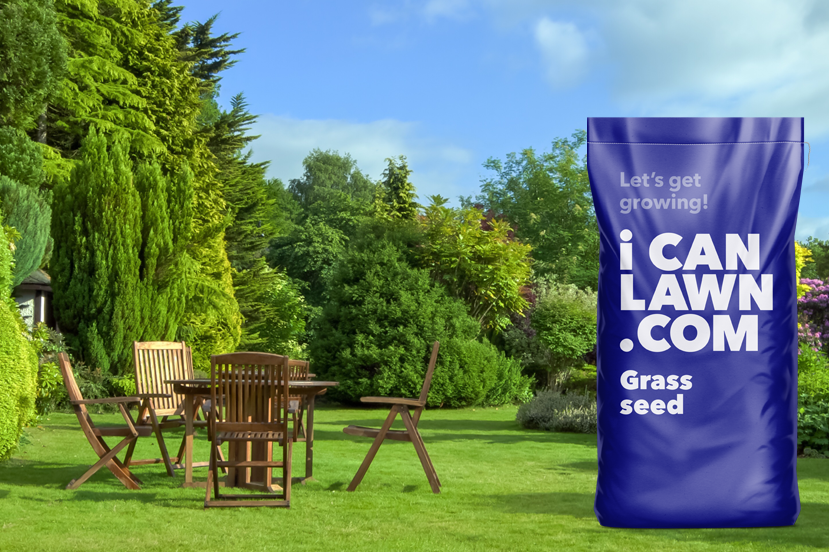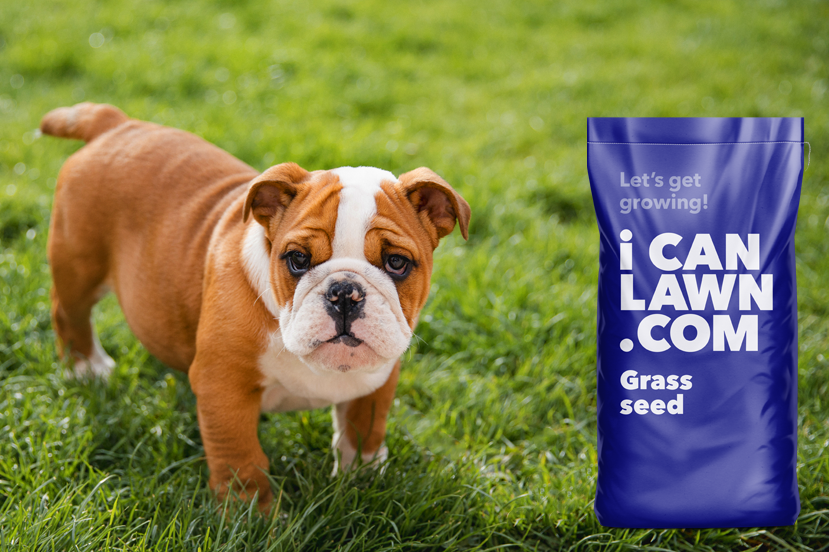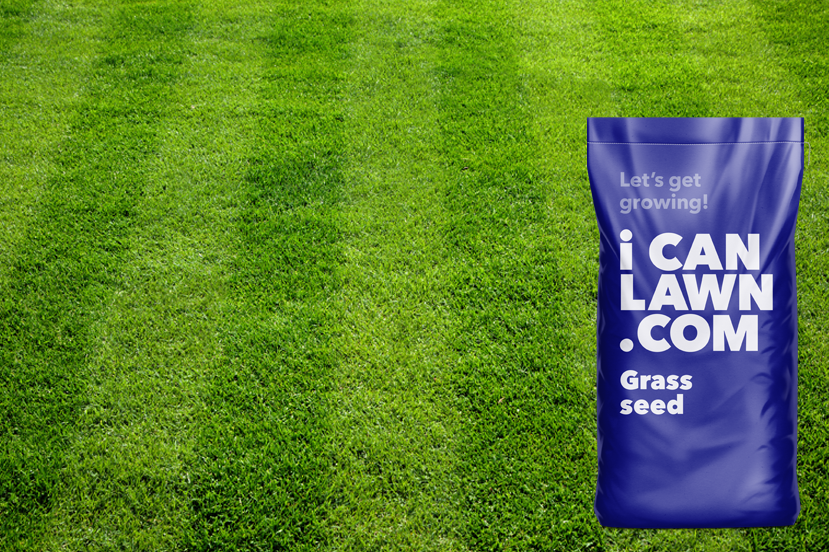Why should I overseed my lawn?
Even the most manicured lawns can become patchy over time. The solution? Overseeding!
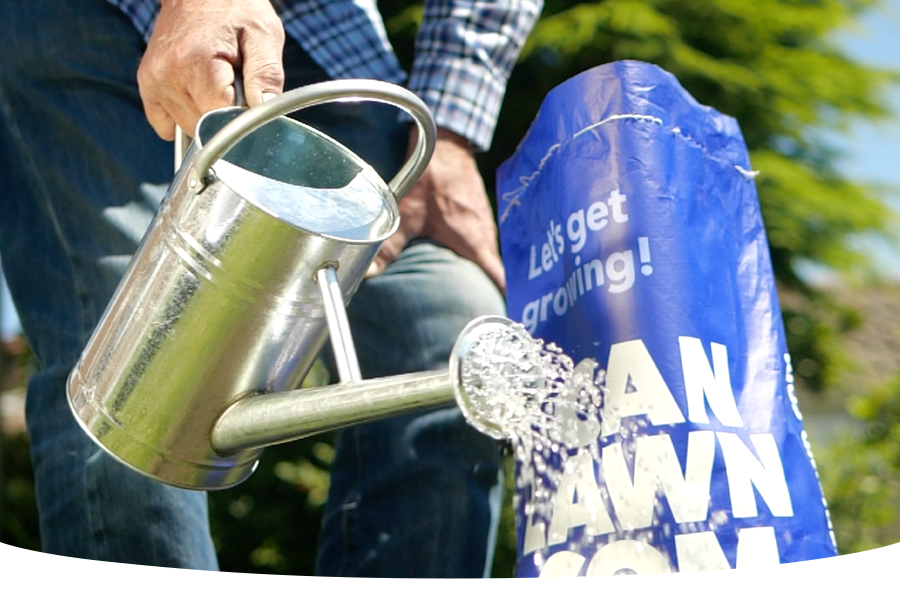
You should overseed a lawn if it looks tired, thin or worn out. Overseeding can be completed without causing any trouble or damage to your current lawn. It is simply the process of sowing new grass seed amongst your existing grass.
But why do we do it? More often than not, it’s because we’re lawn fanatics, and we want our lawns to look the best they possibly can. Overseeding is a great way to plump up your lawn and rejuvenate it back to its former glory whilst fixing all those little issues along the way.
Removing moss and weeds before overseeding
As part of the overseeding process, you'll need to remove weeds and moss. If you have only a few weeds, you can use a trowel or spray weedkiller to remove them. Moss can suffocate your existing grass, so you'll need to rake this out.
If weeds and moss are prominent and run throughout your lawn, applying a treatment that will tackle them both is best. 3 IN 1 Lawn Rescue eradicates weeds and moss but also feeds your lawn. If you’re overseeding without doing this, you might get a poor result, as your new grass could struggle to compete with any existing weeds or moss. By removing weeds and moss, you will end up with a thicker lawn at the end of the overseeding process and get rid of those pesky weeds that have been ruining your pièce de résistance!
Repairing patchy areas of grass
Over time, a well-loved lawn can suffer the aftereffects of wear and tear, and overseeding is a great way to get it back on track and back to looking its best. We know wear and tear can be hard to avoid when you have a lawn you love to use, but to try and help reduce the damages, you could opt for a more hard-wearing seed, like our Fast Grow Family Lawn or our Tough Stuff Lush Lawn. Both were created to handle everything the family and pets throw at it!
By overseeding your existing lawn, you can start to thicken up the thinning patches and overseeding the bare areas to have your lawn looking thick, lush and green again. To boost your lawn before overseeding, consider applying a pre-seed lawn food such as our Pre-Seed First Feed. It is packed full of all the nutrients your soil needs to help speed up the growth of new seedlings and thicken up already existing grass.
Level your lawn for even growth
Before you overseed your lawn, you might notice dips and areas that make it unlevel. The addition of topsoil can help to level out these areas and reduce water pooling on the surface. Topsoil is the best soil for your lawn, and overseeding offers a great opportunity to finally fix those bumpy areas!
Keep your garden healthy
After overseeding, allow your lawn 6-8 weeks to fully establish. Once your new grass is fully grown, beautifully green and healthy, regularly and seasonally feed it to keep it this way. In spring / summer, this could mean applying a greening feed such as our All Summer Long - or if you complete an autumn lawn overseed, then protect your new grass with our Winter Remedy.
Overseeding a new lawn!
All lawn enthusiasts love looking outside and seeing a healthy, green, lush lawn looking back. But you may find that your current lawn isn't working for you quite the way you want it to. For example, if your grass struggles to grow in clay soils or shaded areas. Or perhaps you need a super hardwearing lawn for your new pup. You may even want to up your lawn game and achieve an ornamental lawn. All of this can be done by overseeding with a grass seed to help you achieve your ultimate lawn!
The best conditions to overseed
Before you sow, make sure to check in with your weather app. Temperatures need to be 10 degrees and above consistently for about two weeks. Depending on your location, late summer and early Autumn are normally the best times to overseed.
How to overseed a lawn
Now you know why to overseed your lawn, you can have a look at our guide on How to overseed an existing lawn, which will help you get it right the first time.




